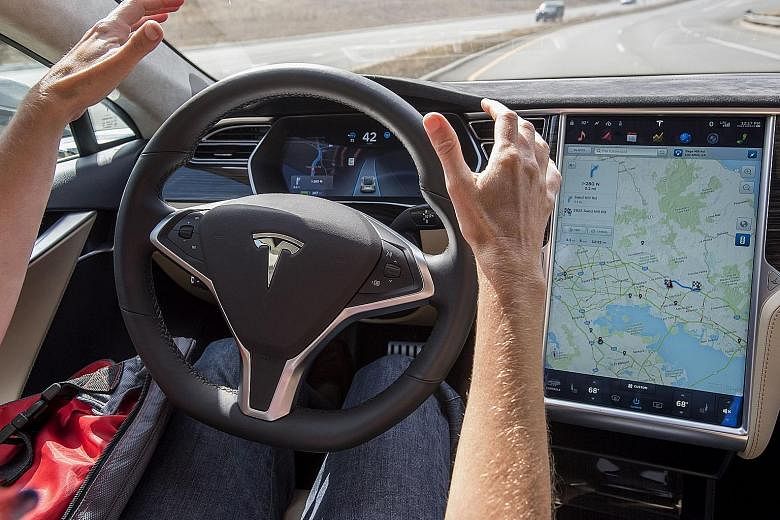WASHINGTON • Electric-car maker Tesla says it is upgrading its semi-autonomous driving system Autopilot, putting new limits on hands-off driving and making other improvements that may have prevented a fatality in May.
Tesla founder and CEO Elon Musk said on Sunday the update, which should be downloadable in two weeks for models delivered after October 2014, "very likely" would have saved the life of Tesla Model S driver Joshua Brown, who died after colliding with a truck crossing a highway on May 7.
The Florida tragedy - the first deadly crash involving a driverless system - took place after Autopilot failed to detect the truck due to poor weather and low luminosity. With the update, the system would have identified a "large metal object across the road", Mr Musk said.
The more advanced radar technology - which will now be used as a primary control sensor, rather than relying on the car's standard camera system - easily sees through fog, dust, rain or snow.
"It should work for something like a moose, because a moose is quite a big mass, but it may not work for something like a small deer," Mr Musk said.
Tesla said "the net effect of this, combined with the fact that radar sees through most visual obscuration, is that the car should almost always hit the brakes correctly even if a UFO were to land on the freeway in zero-visibility conditions".
The company's cars, it said, will also be able to bounce the radar signal under a vehicle it is following and still brake, avoiding a potential pile-up should the car in front crash. "Perfect safety is really an impossible goal," Mr Musk said of the update, which was developed over the past three to four months.
"It's about improving the probability of safety. There won't ever be zero fatalities, there won't ever be zero injuries."
The Tesla chief estimated that the new system was a threefold improvement of safety, while stopping short of considering the update a recall of the old system.
The new restrictions introduced for Autopilot 8.0 acknowledge widespread concerns that the system lulled users into a false sense of security through its "hands-off" driving capability. The updated system will now sound warnings if drivers take their hands off the wheel for more than a minute at speeds above 72kmh when there is no vehicle ahead, Mr Musk said.
The warning will sound after the driver's hands are off the wheel for more than three minutes when the Tesla is following another car at speeds above 72kmh.
"We're making much more effective use of radar," Mr Musk said. "It will be a dramatic improvement in the safety of the system done entirely through software."
The US National Highway Traffic Safety Administration (NHTSA) has been investigating Tesla's Autopilot system since June because of the fatal accident. NHTSA had been briefed on the changes by Tesla and would review them, spokesman Bryan Thomas said.
One of the main challenges of using cameras and radars for a braking system is how to prevent so-called false positives, in which a car might think an overhead highway sign, for example, was an obstacle to be avoided.
Using radar and fleet learning, rather than relying primarily on cameras, would solve that problem, Mr Musk said.
AGENCE FRANCE-PRESSE, REUTERS

